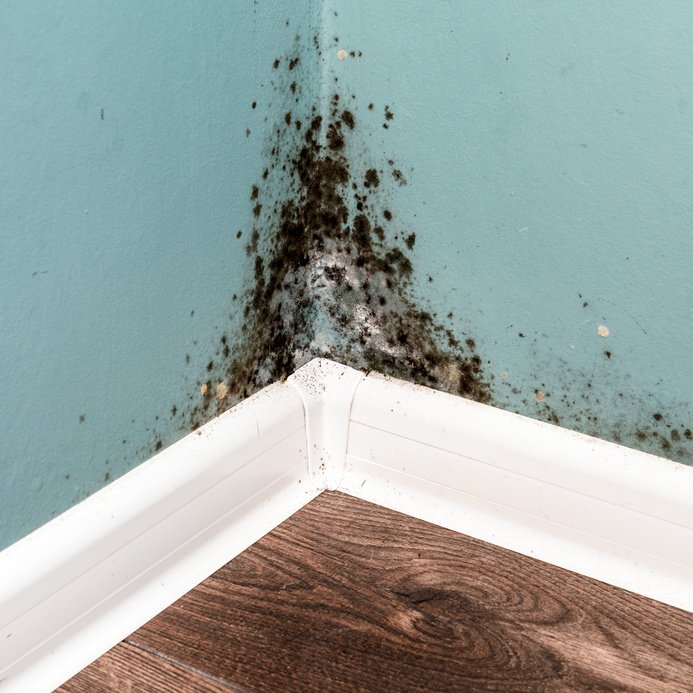If your home has a basement, chances are you’ll experience some kind of water damage at some point. Only 2% of houses with a basement will avoid the issue altogether, so it’s not a safe bet to make. The problem can be minimal at first, but over time can grow into more and more serious issues.
What Is a Crawl Space?
The hollow space between the ground and the first floor of houses is called the crawl space. Not all houses have crawl space, but when they do, they are usually 1 to 4 feet high- just enough space for someone to crawl inside.
How Moisture Gets In
There are many ways that water can get into your crawl space. One of the most common ways is through leaks in the plumbing. You might not notice the leak right away, and this could be especially true if you have dirt in your crawl space as the moisture might not be instantly visible.
Water can also come in through the foundation walls. If a gutter isn’t pouring out to the right place, the soil next to the foundation walls can become too saturated and start to leak right through the wall.
Finally, water can come in through the crawl space vent. While the purpose of crawl space vents is generally to keep the crawl space dryer, in humid climates (or when it rains a lot, it can have the opposite effect.
Why Moisture Is Bad
It seems obvious enough…you don’t want water inside your home where it doesn’t belong. But beyond the obvious desire to not have to wade around in a pool of dirty crawl space water, moisture can cause some really nasty problems.
Chief among the concerns is mold–especially black mold. If the problem goes unnoticed, it can be deadly. And any mold, in any amount, can still cause health problems. So it’s extremely important to take care of moisture problems right away.
Rodents or other pests may also be more attracted to a damp crawlspace. And to make the situation worse, dead rodents and droppings create extremely unsanitary environments when standing water becomes an issue and it becomes harder to identify potential hazards.
How to Keep Your Crawl Space Moisture Free
A damp crawl space can cause a variety of problems for your house, including the proliferation of mold and mildew and is also a great place for termites to set up camp. Apart from termites, crawl spaces with moisture are an inviting space for rats, snakes, and other vermin. If that’s not enough, a damp crawl space will decrease your home’s value by a significant margin.
That’s why it makes sense to wonder how to keep your crawl space moisture free at all time. Well, here are a few tips to do so.
1. Make Sure Your Foundation Is Insulated
Basement waterproofing should be the first step to take if you want to keep your crawl space moisture-free. Consider installing at least 1.5 inches of rigid waterproof membranes all-around your basement. Ensure you tape the seams, so no moisture or air passes through, or else the waterproof membrane won’t be as effective. Also, caulk the seams so that moisture-laden does not flow through and always remember to insulate the rim joists on your foundation too.
2. Get a Dehumidifier
A crawl space dehumidifier is always a good move when you want to dry out your crawl space. Make sure you get the dehumidifiers specially designed for crawl spaces and not the usual house dehumidifiers. But if your crawl space is not that wet, then you can use a normal dehumidifier, though it could run your electricity meter by quite a bit. Just plug your dehumidifier and leave it on for a few hours until your crawl space is moisture-free or until you think it’s okay.
3. Drain Your Crawl Space Better
The overall drainage condition of your house will determine just how to keep your crawl space moisture free because you will gauge how much moisture seeps into your crawl space. It is, therefore, good to have the proper grading so that rainwater flows away from the house and not into the crawl space. At least 5 inches per foot will suffice. You could also have a special crawl space drain system for severe cases. Just call your local contractor or plumber, and he/she can easily set you up with one for a reasonable price.
4. Cover the Floor of Your Crawl Space
It may seem pretty obvious but covering your crawl space’s floor works to prevent dampening of the crawlspace. There are special heavy-duty materials called crawl space vapor barriers that do a bang-up job of preventing moisture from getting into the crawl space. Laying the moisture barriers in continuous runs always works best, and don’t worry about any small punctures while laying out the barrier, they only let a negligible amount of moisture through.
5. Use A Fan
When your options are limited, an electric fan could work just as well as a dehumidifier. Similar to a dehumidifier, place the fan at the crawl space opening and leave it on for a few hours. Do this repeatedly for a few days, and you’ll notice a significant moisture reduction in your crawl space.
Keeping your crawl space moisture-free is a good practice for any homeowner keen on maintaining his/her house. These tips are essential to keeping your crawl space moisture free and drying out your crawl space too. You can find all the materials discussed in your local hardware stores or online for an even better deal. Remember, a moisture-free crawl space equals a safer home.
Crawl Space Moisture Removal
Those were a few things that can work in your favor for keeping your crawl space dry. But when a problem does arise, it’s also important to understand some steps to take for crawl space moisture removal. But always keep your safety in mind above all else. Protect yourself with proper clothing and a respirator if necessary.
If you’re not comfortable wading through standing water, with the potential for dead rodents and floating droppings, it may be a good idea to call a professional for help. Professionals have the gear and experience to deal with your problem efficiently.
With that in mind, if you proceed on your own, the first step is to find the source of the moisture and stop it if possible. You’ll want to remove standing water (this can be done with sump pumps), then move on to mold removal by scrubbing mold off of any surface.
Then you will need to clean out your crawl space (boxes, anything you’re storing down there) and check for water damage.
After the crawl space moisture is removed, re-evaluate your moisture barrier and determine if further steps need to be taken. Water protection can include encapsulation–which is basically covering your entire crawlspace with protective material that helps protect the structure and keep moisture out. You can also install sump pumps, and consider better drain systems, depending on your climate, needs, and budget.


